Indians of African Origin?
We first came across the story of the Siddis a few years ago in an article that spoke about a community of African descent living in pockets of Gujarat, Maharashtra and Karnataka. The article referred a people who came to India centuries ago, as slaves, traders or warriors, and fought for their place amongst the fluid boundaries of a jumble of Indian states. A few even rose up, establishing ‘kingdoms’ along India’s western coast before fading into oblivion. Today those who remain, the descendants of those original Siddis, are integrated into broader Indian ‘society’ in terms of language and way of life, yet live on the fringes, holding on to some of their own traditions and customs.
It made for a fascinating read.
In India’s complex mosaic of histories, the story of the Africans who became Indians is a curious one. Their passage to India and their history here is not very well documented but the consensus seems to be that they are descendants of the Bantu people of East Africa and originated from Abyssinia in present day Ethiopia. They were first brought to India as slaves of the Arab traders in the 7th and 8th century and later came as traders themselves with the Portuguese and British. Many came for better prospects. The Siddis, it appears, whilst ethnically similar in India, are not one people. Depending on their passage to India and where they settled, they differ in the language, religion and to some extent in economic backgrounds as well.
The story was filed away in our ever increasing mental list of cool things to check out in India, and was largely forgotten, until we started planning our Maharashtra Konkan road trip earlier this year. We were discussing this with a traveller friend, and he mentioned casually, that we should check out some of the old Islamic style tombs of Murud Janjira. We were hooked!
Murud & the Siddis
It was only when we started researching these tombs in Murud that we made the Siddi connection. These tombs were infact those of a Siddi dynasty that had ruled Murud for more than 300 years, through the periods of the early Islamic Sultanates, the Mughals and even the British, Marathas and Portuguese, building a small but powerful state. It was the dynasty that built the famed Janjira fort!
Two weeks later we were in Murud, which called for some beach time and epic Konkan cuisine.
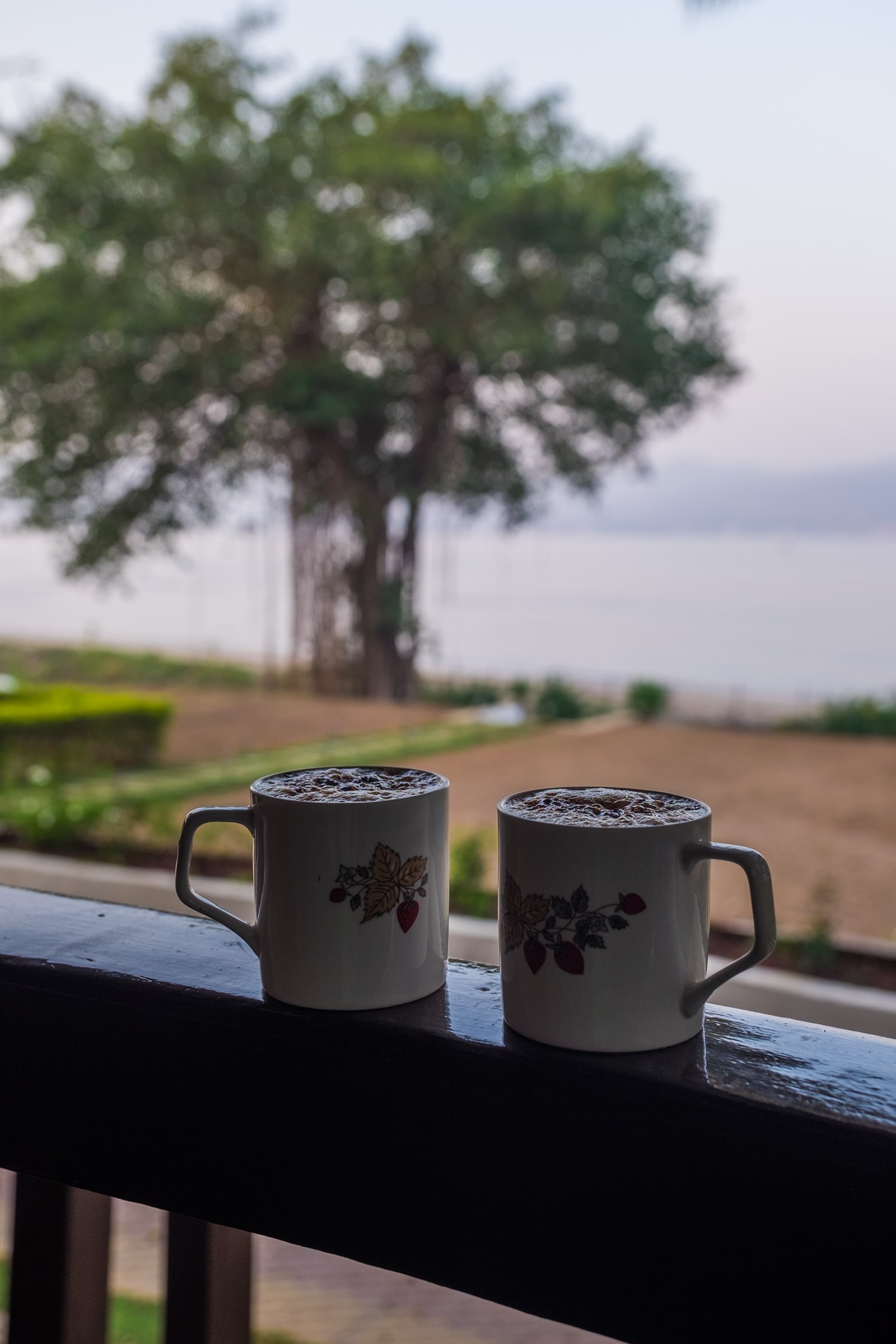
SaffronStays Little Paradise is not one of your typical Murud Janjira hotels, but a pair of charming little wooden cottages located on a strip of beautiful private beach, away from the madness of the more touristy beaches! Quiet and secluded, it seemed just the place to explore a different side of Murud.
Our first taste of Murud’s Siddi past actually came about a bit serendipitously, even before we were reached the town. We were probably a few kilometres outside of Murud in the little blue brio driving along the coastal road, when we turned a corner and suddenly out of nowhere, at the edge of the cliff with a commanding view of the ocean, emerged this massive European style structure.

From its scale and magnificent work, it was clearly an old palace, but whose? And why was it lying here in the middle of nowhere? As we drove up to the gate we met an ice cream vendor (again why he was there in the middle of nowhere is an enduring mystery!) and asked him about the structure. Rajah ka Mahal hai, he replied. Further prodding got us nowhere. The gate was locked with a great big chain and giant padlock and a sign warning folk like us away! But also on the gate was a seal which inscriptions in what looked like Arabic and a worn out sign that read Nawab’s private residence. Could this then be the palace of the Siddi Nawabs of the erstwhile Janjira state?
Further research standing there at the side of the road confirmed the same. It was indeed the Palace of the Siddi Nawabs, now belonging to the 14th descendant of the family. The Ahmedganj Palace, as it is called, was once open to public, but unfortunately is now closed due to a few incidents of vandalism. We stood at the gate squinting at the magnificent stone structure through gaps in the grills, feeling slightly dejected, but also pleased that we had already experienced our first little piece of Siddi heritage.
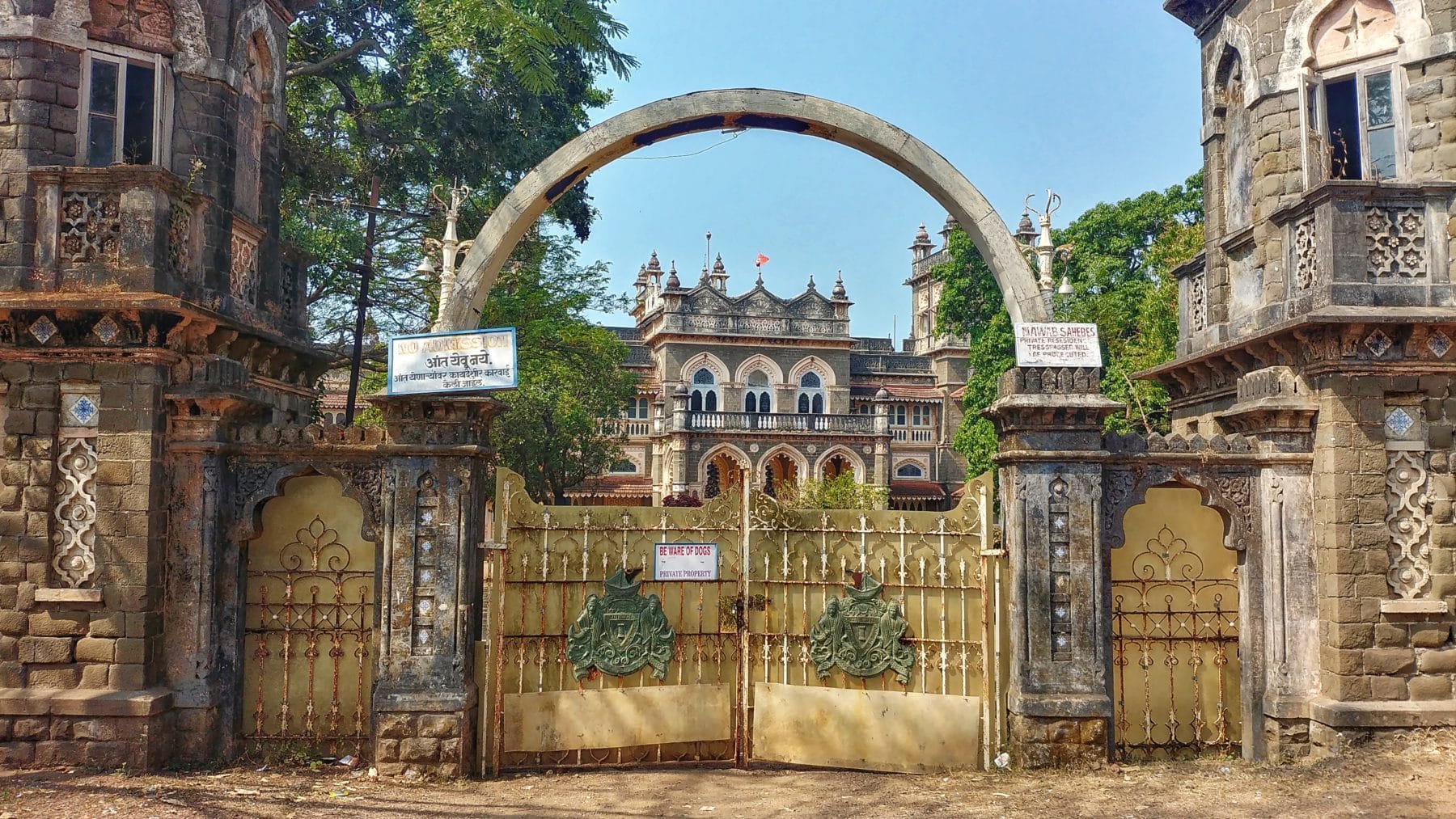
Our home on the beach.
We headed to our beachside homestay after our long drive to spend the rest of the day lazing in our cottage and listening to the gentle rhythm of the waves as the late afternoon sun slowly set over the Arabian Sea.
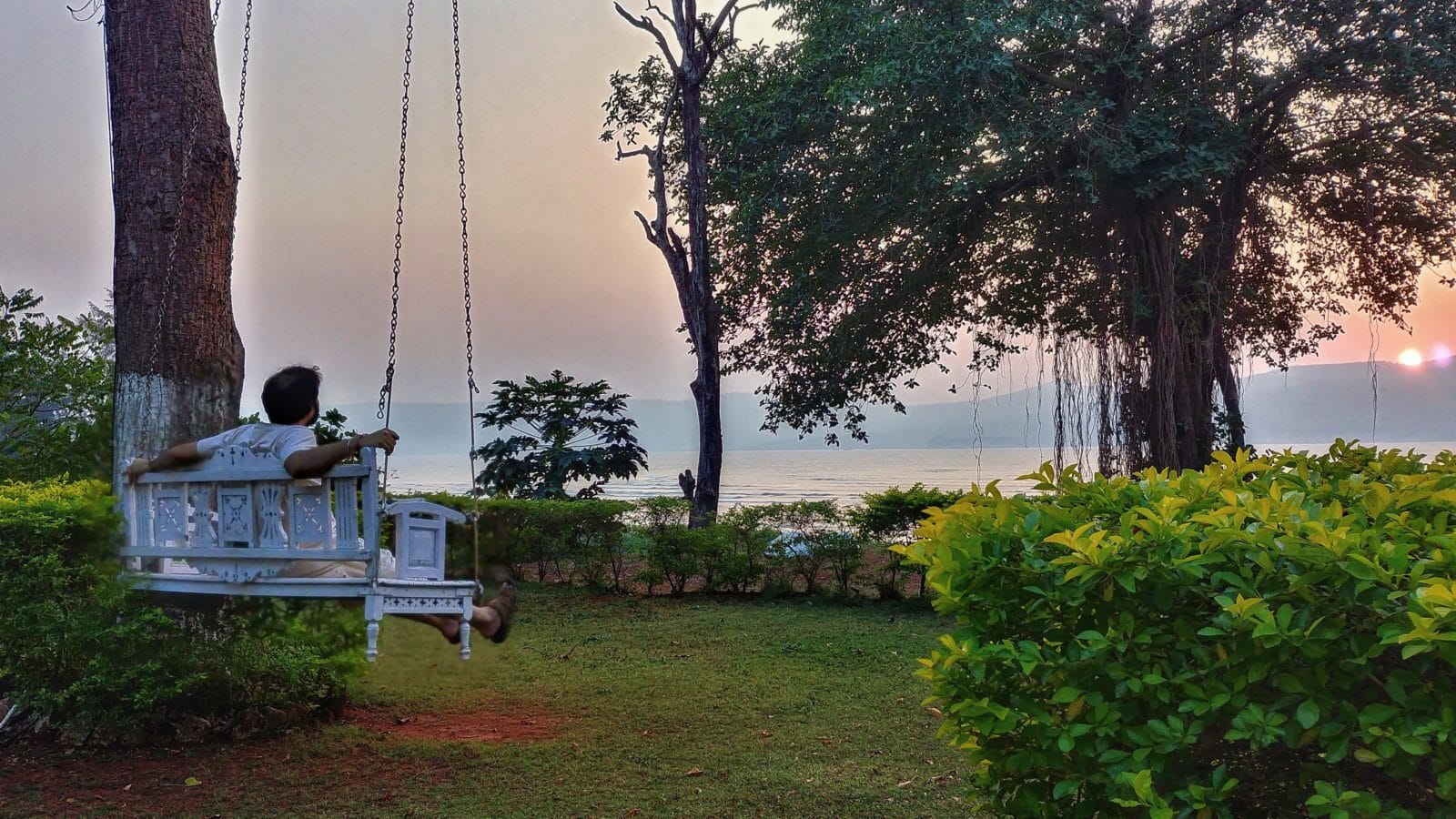
The next day we awoke bright and early not to the sound of our alarms but to the squawking of Geese! Turns out our homestay, SaffronStays Little Paradise was also home to a few chicks and a pair of Geese, who made it their responsibility to wake up the guests every morning as they set about their business! Up early we decided to take a walk on our private beach (what a luxury!) before a lovely breakfast under the canopy of an old Banyan trees. We were happy for the early start to visit the 300-year-old Khokari tombs before the day warmed up.
The Khokari Tombs
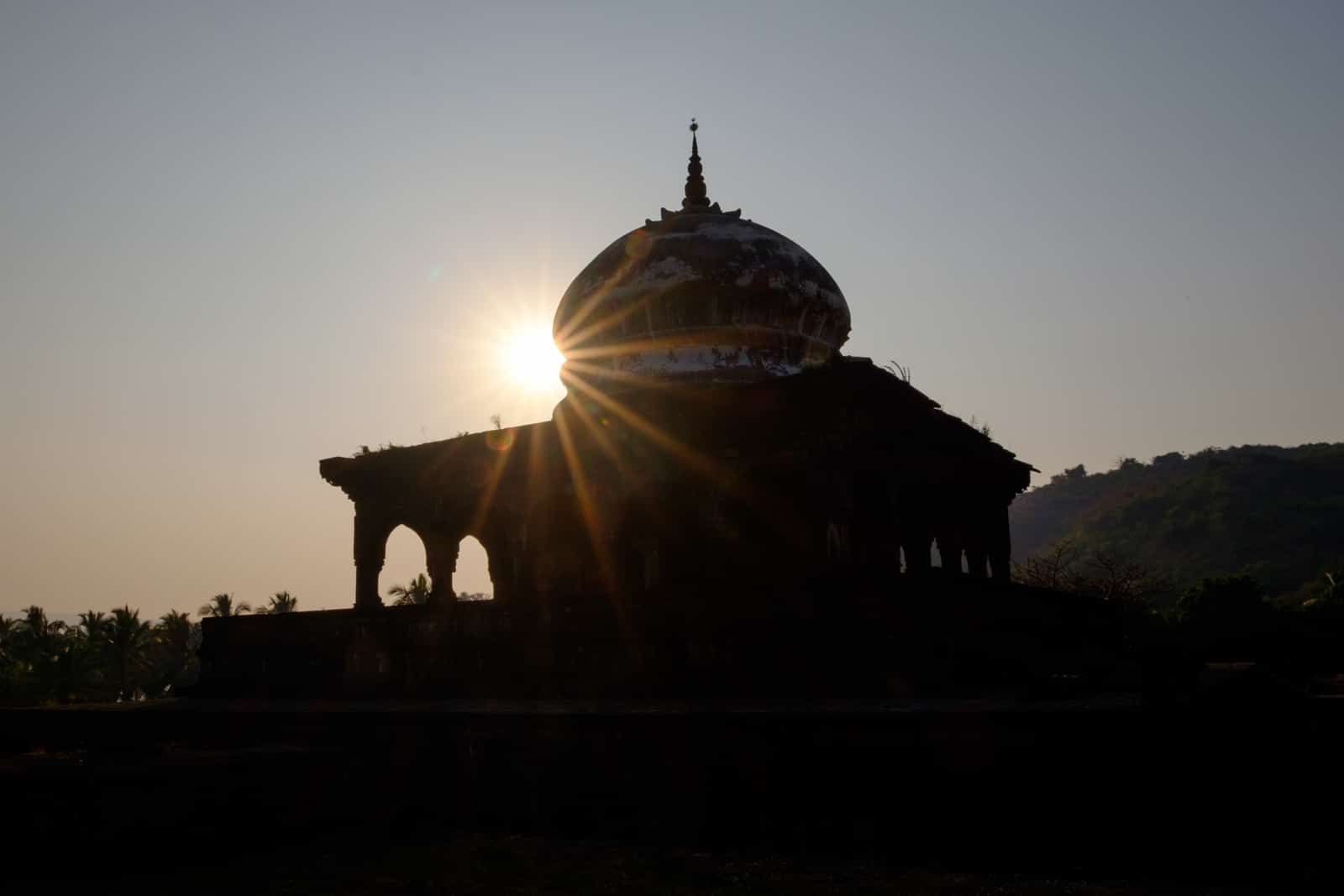
As was the practice of many Islamic dynasties, the Siddis of Janjira also built their own tombs, with Siddi Surul Khan, the Wazir of Janjira State from 1707 – 1732, the most prominent. His massive tomb stands on a raised platform in the centre of what seemed like a moat with a large central dome, surrounded on all sides by pillared corridors, reminiscent of some of the ones we had seen in places like Bijapur. The other two in the same complex and another just opposite the road were smaller and simpler, perhaps befitting the status of those who commissioned them.
The tombs whilst a commanding presence, were quite austere and unlike the tombs of prominent Mughals or some of the other Islamic sultanates, lacked ornamentation and the heavy geometric or floral designs one had come to expect from typical Indo-Saracenic architecture. Unfortunately, like many such obscure monuments around the country the tombs are in a state of neglect, with the typical scribbling on the walls that we Indians seem to find so satisfying.
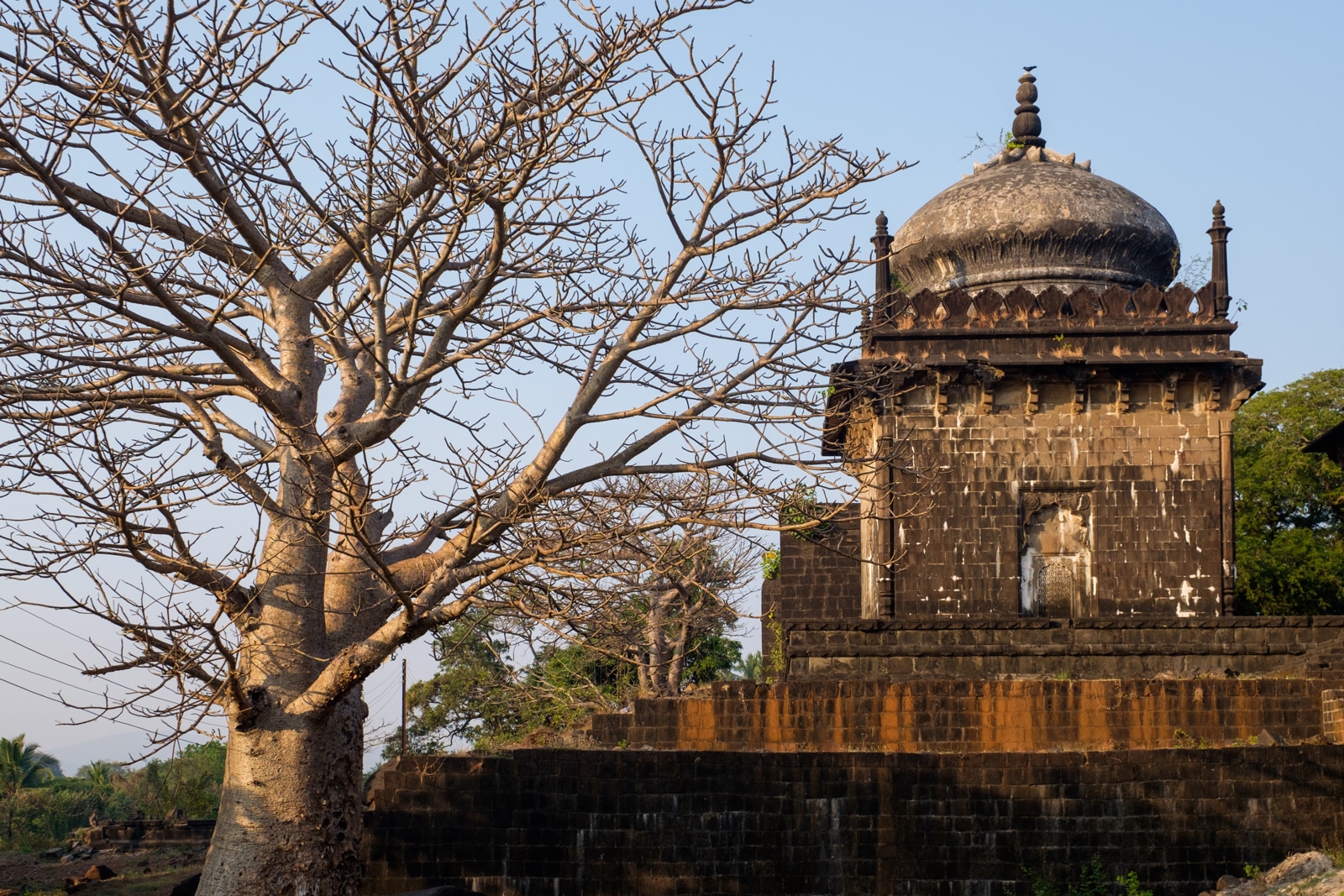
We walked around the tombs, taking it all in when something caught our attention. It was pair of Baobab or Boab trees, planted in the complex, another indication of the Siddis’ African heritage. The Baobabs, native to parts of Africa, with broad trunks and scant leaves, are engineered for retaining water in arid climates and seem rather out of place in the humid, seaside Murud. The Siddis it seemed had a tradition of planting Baobab next to their graves, and we encountered this not only in the Khokari tomb complex, but also near another dilapidated tomb we found sitting forlornly by the sea.
We had first encountered the Boab in Orchha in MP, and it made us wonder how this African tree had found its way there. Could there have been a Siddi connection in Orchha as well? Could the Siddis of Murud or of Gujarat had some sort of relationship with the Bundeli Rajput Rajas of Orchha, who had a close relationship with Mughal emperor, Jehangir?
It’s a mystery we are yet to solve and the thought lingered as we slowly drove away, our last view of the tomb domes, perfectly aligned in a row, shimmering in the sun, an enduring image that will stay with us.
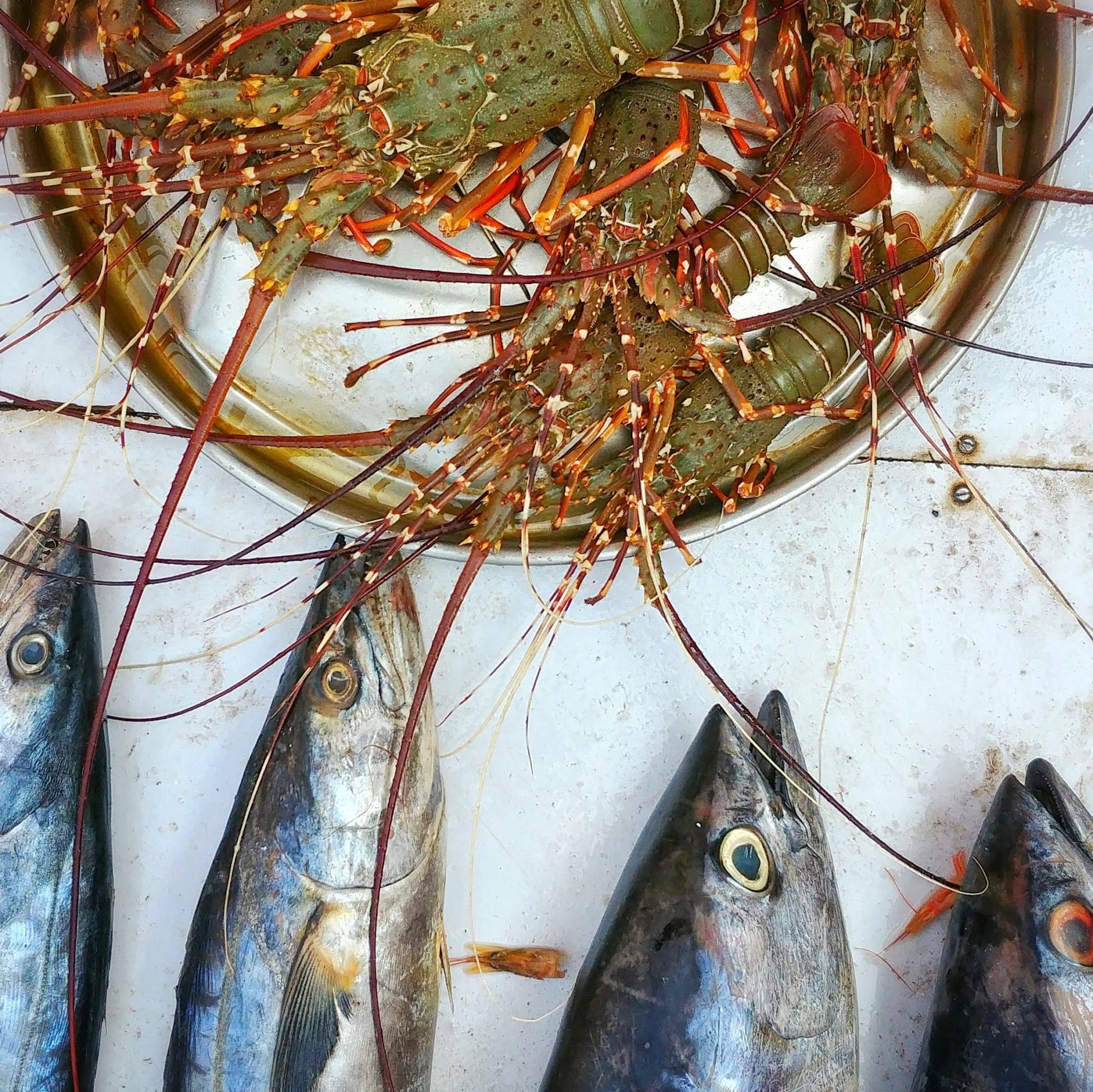
Our appetite whetted by the unexpected sight of the Boab trees we decided it was time for an epic Malvan seafood meal. Our caretaker at SaffronStays Little Paradise, Jehangir (no relation to the Mughal as far as we know) suggested that we make our way down to the market and buy our own catch from the local fisherwomen. The thought of fresh catch with cold beers fuelled us on as we made our way down to the local fish market and after a bout of half-hearted haggling (we were hungry and it was already so cheap) we purchased a small mountain of prawns and a pair of large lobsters for the princely sum of Rs 500/- Our meal of prawns fry and lobster curry washed down with a bottle of the king of good times in a local seaside dhaba was one the most memorable of our trip, and whilst slightly out of our budget, was excellent value 🙂
Janjira Fort, The Unconquerable
We had saved the best for last.
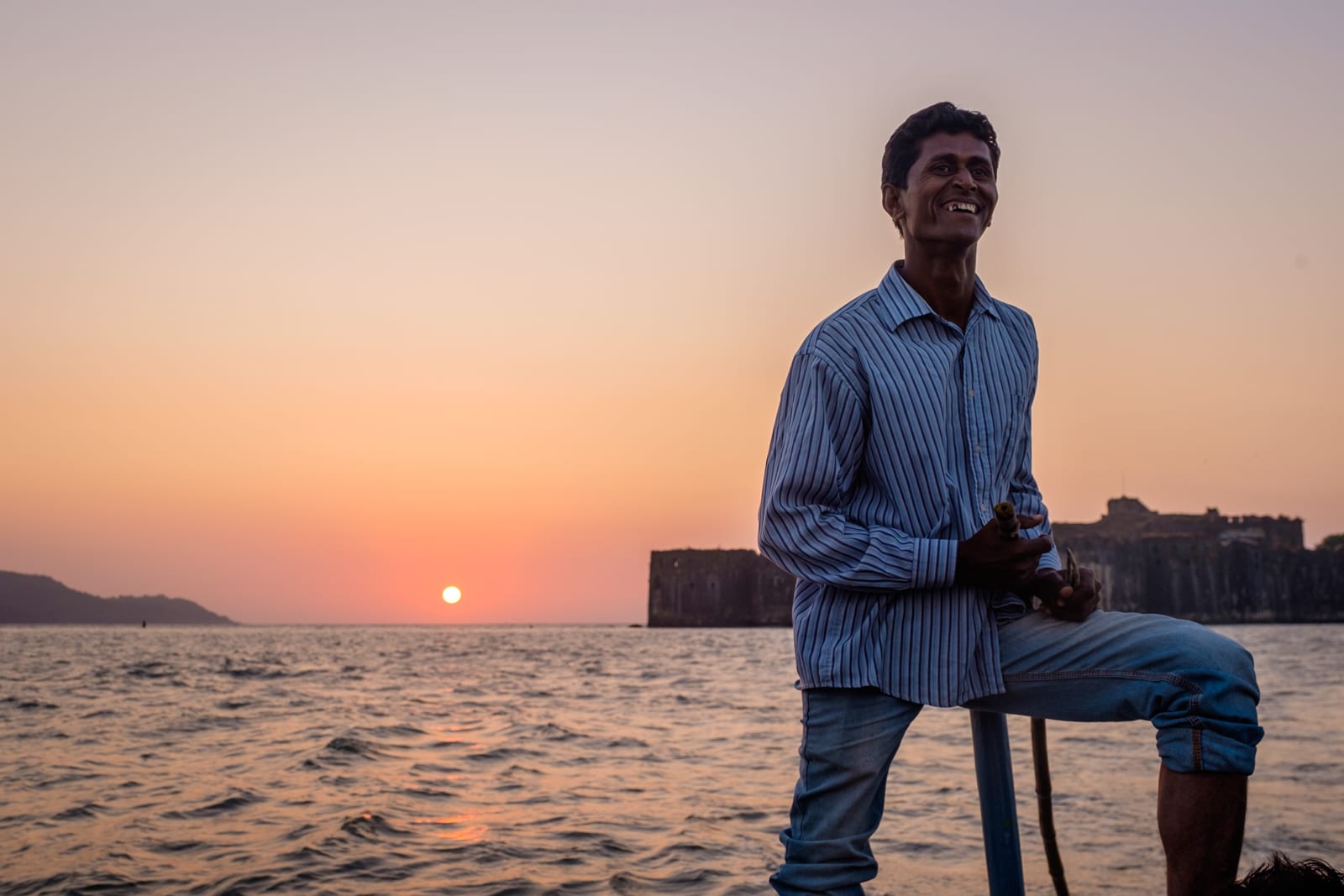
It was late afternoon and the sun was already softening as we made our way down to the jetty to catch the ferry to the famous Murud Janjira fort.
The Janjira fort sits on a rocky island approximately a kilometre from the mainland, and was initially built as a small wooden fort around a temple on the island, by fishermen as a defence against sea pirates in the 15th century. The fort was subsequently captured by Malik Ambar, a Siddi in the service of the Ahmadnagar Sultanate, and for the next hundred and fifty years, the Siddis used the fort as a base to consolidate their strength, renovating, strengthening and extending it over the 22 odd acre Island.
At its peak, in the 17th century, the Janjira fort is said to have had walls 40 meters high, 19 bastions and a mind boggling 572 cannons!
And it had never been conquered.
Coveted by the Marathas, the Portuguese and the British, the fort was attacked several times over its 300 year old history, most notably by Sambhaji who made various attempts to capture it, even going so far as to build a rival fort, Padmadurg far into the sea to launch attacks. But the fort survived unscathed.
As we approached by sailboat the ominous power of the Janjira fort is apparent. Its sheer black stone walls, strengthened by a mix of jaggery, limestone and glass seem to rise up from the seabed itself and has survived the ravages of time and the relentless battering of the ocean for centuries. As we made our way to the fort in our little sailboat, we stared up at the towering ramparts and wondered at the fortitude or terror of invaders, as 572 cannons poking out of little crevices in the ramparts rained fire on them.
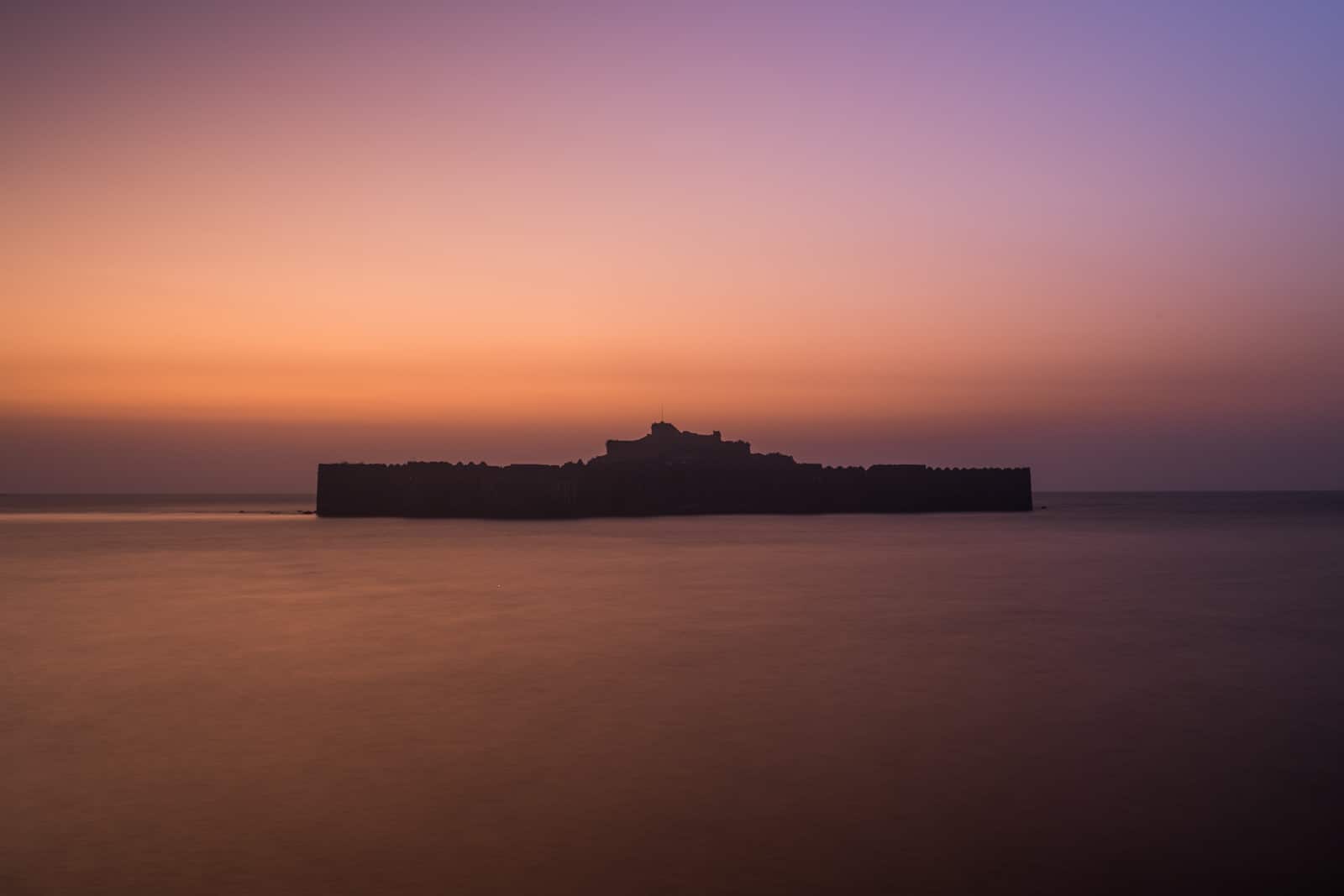
The entrance of the fort, in a stroke of design brilliance, makes itself apparent only once you are literally upon it, something the boatman will gleefully tell you as you approach. As we made our way past the gateway and the inner wall adorned with a carving of an oversized tiger engaged in combat with a group of elephants, we marvelled at the sheer scale, the high walls extending all around and the remains of structures everywhere.
But what also became quickly apparent was the absolute desolation wrecked by forces of nature and human neglect. Everywhere lay piles of rubble. A lonely wall with arched windows was all that survived of the Royal Durbar hall and whilst sporadic restoration activity seemed to be on, it was too little too late.
As we walked through the ruins, the boatman turned guide told us tales of the Siddis and the fort. We learnt about the Kalal Bangdi, said to be the third largest cannon in India, its body built of a heat resistant alloy made with five metals which could launch devastation upto 12 kms away. Of the secret hatch built at the bottom of one of the ramparts where the rulers could make a quick escape if the fort was ever over overrun and like all such forts, the legend, true or not, of an underground (underwater in this case) tunnel to an old palace on the mainland.
Even more fascinating were the two freshwater lakes, supposedly fed by underwater streams which served as a water source to the thousands who lived within the citadel. As we clambered up from the freshwater pool to the highest point of the fort we learnt, that for all their power, the Siddis have all but disappeared from their former kingdom.
There was one lady recounted our boatman, an African, but she died a few years ago, now there are none left here.
And just like that, in the fading glow of the evening sun, another side note in the complex mosaic of Indian history all but fades away.

Some Useful Information:
How to get there: Murud is a popular coastal destination in Maharashtra about a 4 – 5 hour drive from Mumbai, through the impending introduction of a RORO ferry service from Mumbai to Alibag should cut this time significantly.
Where to Stay: There are a number of options by the main Murud beach, but we would suggest venturing a bit further away from the tourist madness. We stayed at SaffronStays Little Paradise a lovely little wooden cottage which is right on a strip of secluded beachfront. The cottage is charming, the caretaker Jehangir and his family take excellent care of you, and the location is unbeatable!
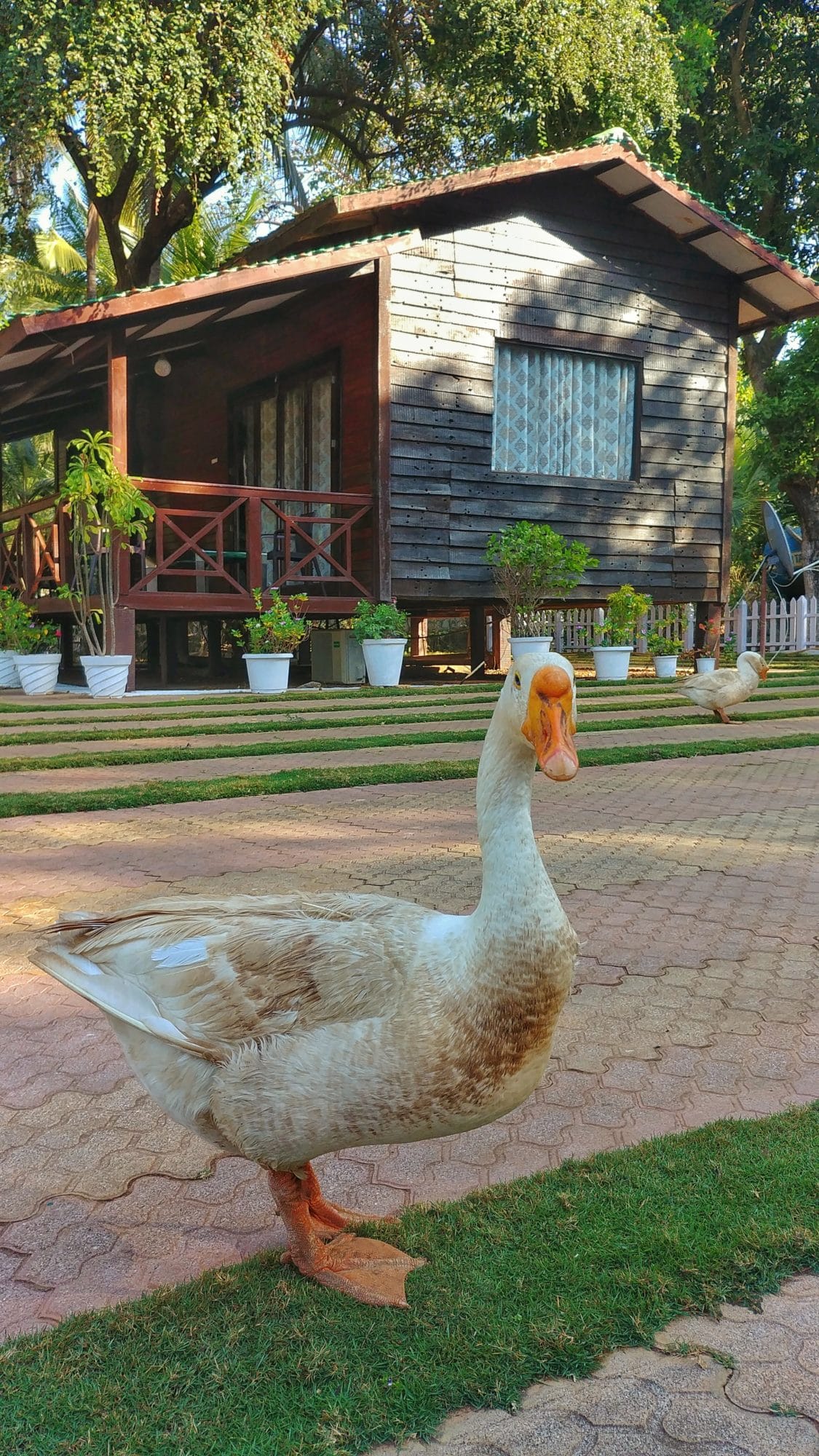
Where to Eat: Whilst the food at Little Paradise, whipped up by Jehangir’s wife is excellent if you want to step out, check out Patil’s Khanawal on the main Murud Beach strip for some excellent Surmai and Mutton thali. If you are feeling adventurous you can also pick up fresh catch at the Murud market and get one of the little beachfront eateries to cook it for you.
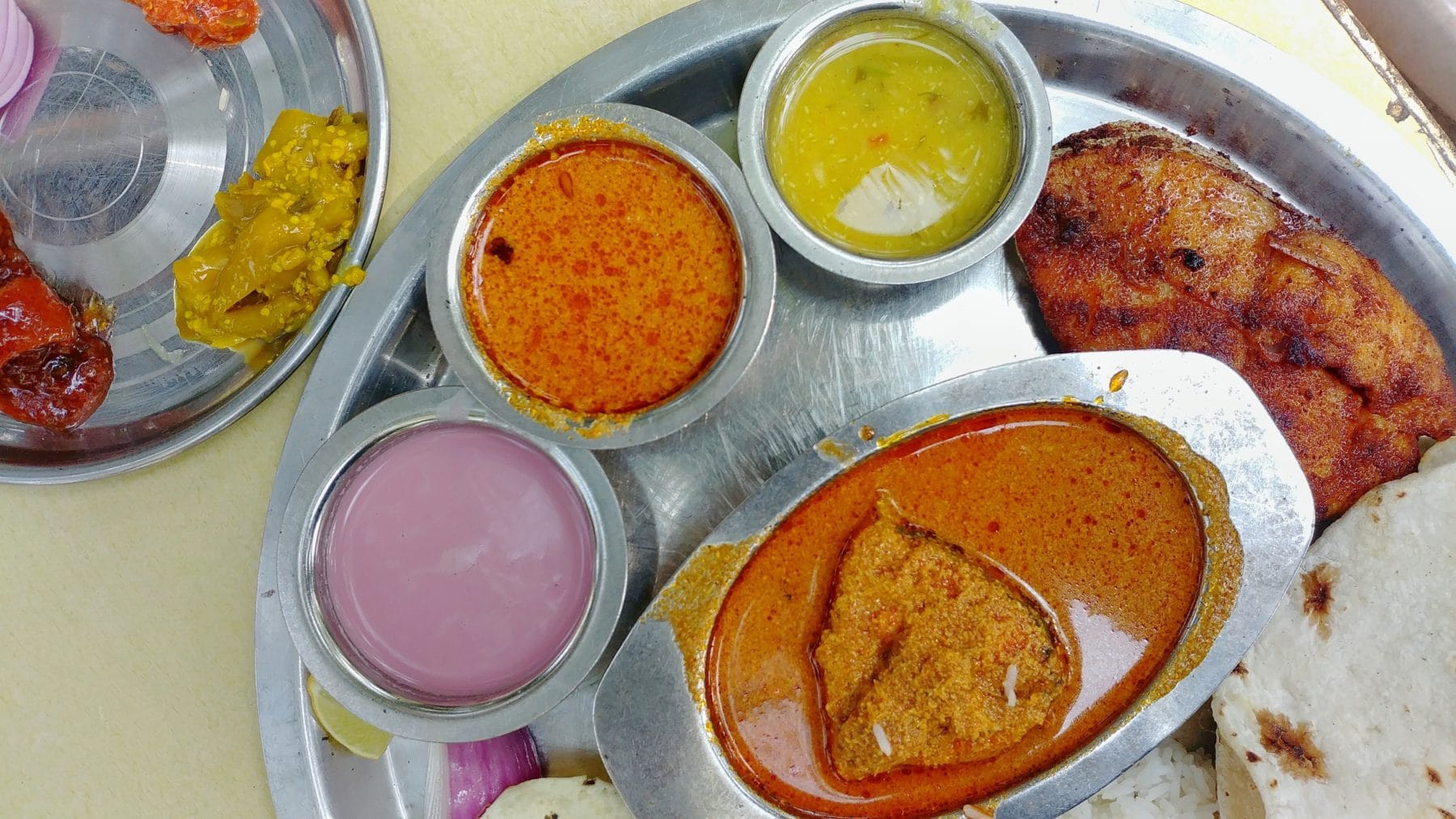
We went to this place in December 2016 and boy were charmed by all the history it offered. At that time we saw the nawabs residence from the beach and finding it’s name on the Google maps drivd to see what it was, sadly though it was covered with sheets and I missed ito on this beautiful emblem you’ve posted here. The kakori tombs were ignored and we were the only humans in that place for over an hour… It’s sad to see history seeped places like these losing their charm.
However in retrospect maybe it’s good that only a few like you and me are able to rediscover these places, and enjoy the solitude.
It really is a wonderful place! We so wish they open the palace to public once again! It’s unfortunate that most folks consider Murud only as a weekend ‘picnic’ destination.. but then again.. like you said.. maybe it’s not 🙂
Fascinating history of Murud.
One of the small hidden stories around India.